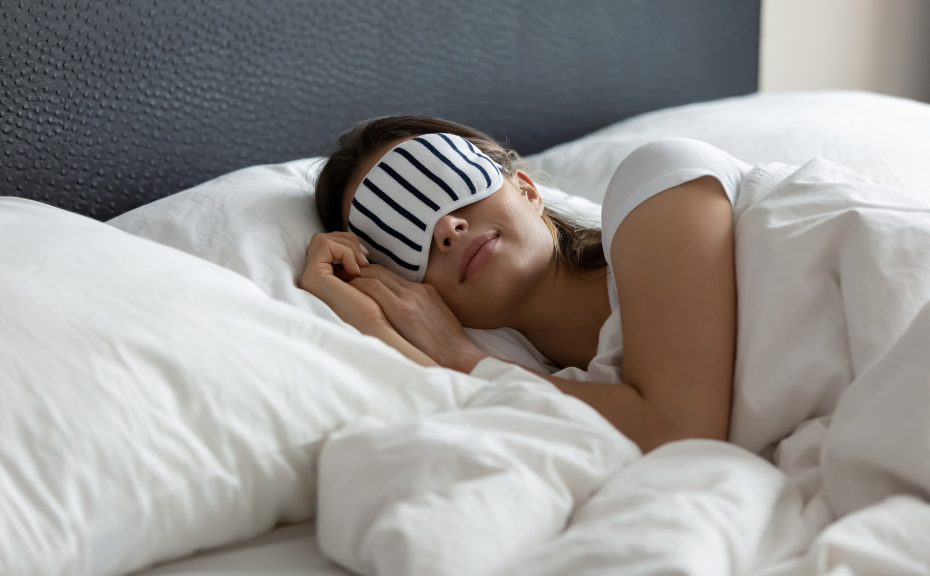What is healthy sleep?
Highlights from our webinar with sleep experts Dr Rosie Gibson and Dr Karyn O’Keeffe.
Did you catch our recent webinar about healthy sleep? Groov’s Clinical VP Dr Fiona Crichton was joined by senior lecturers from Massey Sleep/Wake Research Centre, Dr Karyn O’Keeffe and Dr Rosie Gibson.
The trio discussed all things sleep, including what healthy sleep really means, how sleep changes across a person’s lifespan, and the impact sleep has on our mental wellbeing.
Watch the replay or read our top 5 takeaways below.
1. Night waking is normal
If you wake up a few times a night, don’t fret. It’s “absolutely normal”, says Dr Karyn.
“In fact, I’d expect it to happen in a normal, healthy sleeper,” she explains. “When it starts happening really frequently – maybe more than three times, and it’s for long periods of time – then maybe that warrants a further discussion with a health professional. But certainly waking up, rolling over, and going back to sleep within about 15 minutes wouldn’t be of concern.”
Dr Rosie agrees. “If we’re measuring sleep objectively in the lab, we might calculate something called sleep efficiency – how much time spent in bed was actually spent asleep? We wouldn’t expect it to be 100%. But if it starts to be less than 80% or 85%, then that’s when to seek further assistance.”
2. Be careful with sleep trackers
Both Dr Rosie and Dr Karyn suggest taking information from sleep trackers with “a grain of salt”.
“These devices are not perfect at picking up sleep/wake activity because they’re not measuring what’s happening in the brain. They’re trying to make estimates, generally based on body movement,” explains Dr Karyn.
She adds: “There’s also some anxiety that can come from tracking sleep on a regular basis. We need to ask ourselves, is this device helpful for me?”
Dr Fiona agrees, acknowledging that many people feel anxious after tracking their sleep. If this is you, try tracking your mood, instead. How you feel after a night’s sleep is often the best indication of whether you need to change your sleeping patterns.
3. Use light to support your body clock
As Dr Karyn explains, light is one of the most powerful tools we have for controlling our sleep patterns.
“Light is the strongest source of information for our circadian body clock. It helps synchronise our internal body clocks to the external sun clock,” she says.
Here are some quick tips for using light to set you up for a good night’s sleep.
Get plenty of natural light throughout the day, especially first thing in the morning.
Avoid using light-emitting devices in the hours leading up to bedtime or in the middle of the night.
Make sure your sleep space is as dark as possible.
“When we think about light, we need to be thinking about a whole 24 hours of light. We need healthy light exposure during the day, which can counteract some of the ‘bad’ light exposure during the evening. Then we need to avoid using light at all during our sleep periods,” explains Dr Karyn.
4. Try not to stress about sleep
There will be times in life when your sleep will take a hit, such as during times of stress or change, health challenges, or having a baby.
Dr Rosie reassures us that “it’s okay for sleep to go through periods of disruption.” The most important thing is “to be mindful of behaviours that support sleep during these times, and to not develop bad sleep habits that might roll on outside of these contexts.”
Dr Fiona agrees. “I think it’s really helpful to not be too hard on ourselves. From my own experience now – over many decades – sometimes the anxiety about sleep is the most counterproductive to sleep.”
Here are some practical things you can try when you’re struggling with sleep.
Create a ‘safe space’ for sleep that’s quiet, dark, and comfortable.
If you can’t sleep, remove yourself from your sleep space and do a quiet activity in low light (no devices!) until you feel sleepy again.
Try writing your worries and your to-do list down before you attempt to sleep.
If anxiety persists, consider speaking to a clinical psychologist to see if there’s something else going on that needs to be addressed.
5. Look after yourself during the day
The choices you make throughout the day – such as getting plenty of natural light, doing some exercise you enjoy, and eating at regular intervals – can help to promote sleeping for longer periods at night, says Dr Rosie.
Another way to set yourself up for sleep at night is to learn something new – a nod to Do, one of Groov’s 6 Pillars of Wellbeing.
“There are studies that show that if you’re learning something new, you’ll see a spike in REM activity,” says Dr Rosie.
Dr Rosie also acknowledges that our mood matters a lot, too.
“We know the relationship between our mood and sleep is bi-directional, which makes it quite tricky. When we’re experiencing depression, anxiety, or stress, this can make it harder to get to sleep. But if we’re not having quality sleep, this can exacerbate our mood. It’s very chicken and egg!” she explains.
“Try to take care of those factors which contribute to stress or anxiety during the daytime, so you’re setting yourself up to have the best possible sleep at night.”
The Worry Map and the Breathing Tool in the Groov app can help you manage stress throughout the day. These tools are easy to use, take less than five minutes, and can really help you get better sleep.



